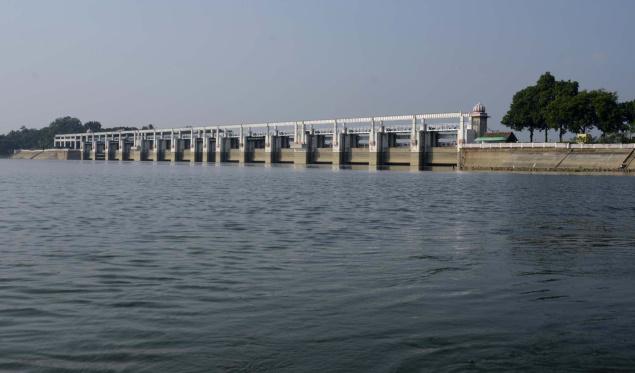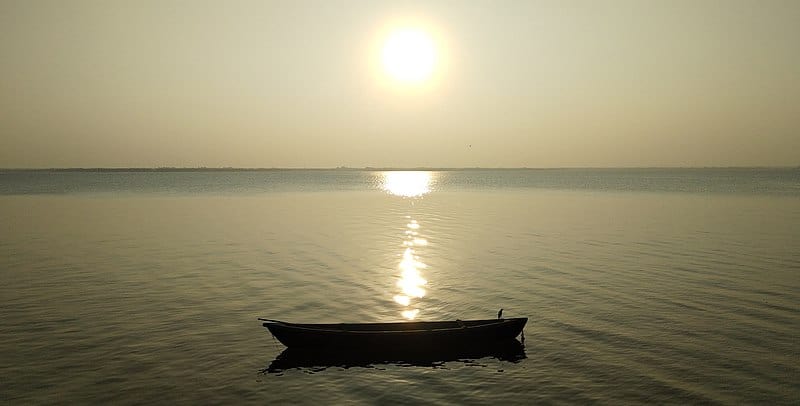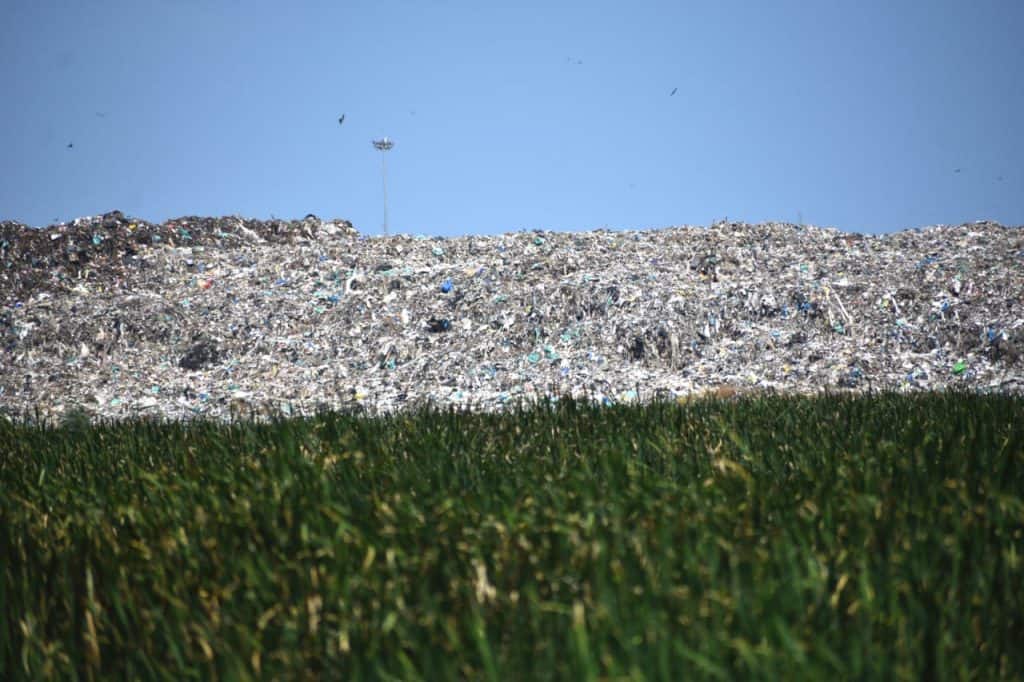Chennai has made global news over the past few years for its woes with water. First, it was the destructive floods of 2015 that saw most of the city under water for days, as a result of excessive rains and poor reservoir management. Then came the drought of 2019, where major parts of the city went without drinking water for weeks as deficit rainfall the previous year played havoc on water availability.
Water has become a major talking point when it comes to discussing Chennai’s livability. For a city with a storied history, could it be that the past offers some insights on why things are the way they are?
The colonial and post-colonial legacy of many individuals has played a role in Chennai’s water management since the 1700s. Revisiting the city’s yesteryears, as is tradition during Madras Week, we turn to a lecture by Historian V Sriram on “Madras’s Tryst with Water Management” for answers. The lecture was part of the Water Matters initiative by Care Earth Trust held in February this year.
“The entire history of Madras can be summed up as a perpetual groping for water and the destination hasn’t yet been found”, began Sriram as he narrated the water woes faced by the city ever since its founding.
Early days of Fort St George
When Francis Day a representative of the East India Company arrived in Madras and set up Fort St. George, the focus of the British was on security of the region. Water was not a concern as much as finding a spot that granted them cover.

The Fort was protected on three sides and the non-perennial river Elambore, which no longer exists, flowed on the other side. The river posed a threat as its brackish waters prevented the discovery of freshwater within the premises of the Fort. Thus began the search for water in Madras.
The British got around the issue by transporting water in bullock carts and horse-drawn carts into the Fort from the nearby Seven Wells area. With the expansion of the Fort, by 1746, the Elambore river was subsumed into the Fort’s design and turned into a moat.
How was the rest of the city coping at this time?
Sriram points out that the terminology “High Road” can only be found in Madras. This is because the settlements that grew around the Fort were all on sandy, elevated ridges. People settled in areas where the groundwater could be tapped. Areas with brackish water were avoided. People drew water from the source using pots and carried them home for use.
During this time, poet Arunagirinathar’s writings give a glimpse of life in Mylapore. He describes the area as being well-planned and wells and tanks meeting the people’s water needs.
The arrival of piped water supply to the Fort
The status quo lasted until George Baker, then-Mayor of Madras, proposed to bring piped water supply to the Fort from Seven Wells. In 1771 he proposed the idea to the East India Company. The idea was approved and lead pipes had to be imported to carry the water.
By mid-1770, piped water reached Fort St. George from Seven Wells. In 1780, Baker sold the entire set-up to the East India Company. Baker then left for England, after having made a profit on the sale. This is the first instance of a person making profit off the water woes in Madras.
The importance of this water supply network came into focus when Hyder Ali attempted to poison the water during the Second Anglo-Mysore war. John Nichols, a soldier with the 102nd Madras European Regiment, was able to stave off those on the mission. He was then appointed custodian of Seven Wells in 1800 for a period of 125 years. The title of custodian passed on to the subsequent members of his family on his demise.
Meanwhile, questions arose over the safety of using lead pipes to carry the water in this network. This practice would have certainly been deemed hazardous in other countries. Inspections by the sanitation commission at that time stated that such water would be condemned back in Britain.
Reservoirs and Kilpauk Water Works
In 1849, an attempt was made to tap rainwater by constructing a reservoir, named Trevelyan’s Basin, after the then-Governor of Madras, Sir Charles Edward Trevelyan. Though the reservoir went out of commission not long after its construction, its legacy remains in the form of Basin Bridge station and the presence of waterworks street in Royapuram.
While people had been dependent on wells and tanks for their water supply till this time, the first scheme to supply water to the entire city of Madras was proposed and work on it completed in 1872.
By the construction of a masonry well, the water from the Kosasthaliyar river was to be diverted to Cholavaram Tank, with a valve house in Red Hills, and an earthen supply channel would carry the water through Kilpauk. But there was to be no direct supply to each household.
There were fountains placed at the corners of streets. Water supply was to take place through a dynamic push and reach fountains at the end of each street. One of the fountains from this time still stands near the Mylapore Temple Tank.
Sanitary Engineer J A Jones laid out a proposal for piped water supply for Madras in 1877, but the scheme did not take off until the 1900s as the city was short of funds. The scheme was eventually brought back to life by J W Madeley. In 1914, the scheme came to fruition, with the commissioning of what is now the century-old Kilpauk water treatment plant.

In 1914, a supply of 50 million gallons was required for the city. Ideally, 21 filtration beds were necessary so that the water could be adequately purified for supply. But the constraints at the time allowed for the construction of only 14 filter beds. With those in power ruling out the idea of rationing supply or requesting the citizens to use less water, both filtered and unfiltered water were mixed and supplied to citizens until the year 1940. Hormusji Nowroji, an Indian Civil Engineer, played a key role in the implementation of the project.
J W Madeley went back to England in 1926. He estimated that the existing water supply system would be sufficient for the city until 1961. But the city reached the population levels estimated then as early as 1941.
Third reservoir and spells of drought
With the increase in population, the need for a third reservoir was felt. In 1939, the then-Mayor of Madras S Sathyamurthy mooted the proposal for a third reservoir in Poondi. Despite the political tussle between C Rajagopalachari and S Sathyamurthy, the reservoir was completed in 1944. It was later named Sathyamurthy Sagar, after the man who endeavoured to quench the thirst of the city.

Madras faced intense water scarcity in the subsequent period between 1948-1952. The situation was so dire that a public prayer for rain was called for. There are accounts of the city coincidentally receiving rain the very same evening.
The Krishna-Penna project aimed at securing water from Andhra was shelved in the interim due to animosity between the people after the reorganization of states. The idea was shelved indefinitely.
While the rains relieved the city of the drought for most of the following decade, the 1970s saw similar spells of water scarcity in the city. The government of the day under M G Ramachandran inked the Krishna water supply scheme in 1976. But the implementation of the scheme was put off until the next decade due to the prevalent political climate.
The Telugu Ganga scheme took off in 1983 after much delay. This was an agreement made by Tamil Nadu with the three riparian states of Andhra, Karnataka and Maharashtra which supplied 15 billion cubic feet of water to the state. While the scheme was launched with much enthusiasm, in reality only 500 million cubic feet of water reached Tamil Nadu after leakages and illegal tapping.
Veeranam scheme and rainwater harvesting
The status quo prevailed through the 1990s. In 2000, when the Jayalalithaa government came to power, the Veeranam water scheme was revived to procure water for the city from the Veeranam lake in Chidambaram. The 10th century tank was originally built to store water from the Kollidam river. Water under this scheme reached Madras in 2004.

Simultaneously, rainwater harvesting was made compulsory across all households and commercial establishments. With this move, the city was able to finally channel rainwater that was going to waste. There was evidence that the scheme increased the groundwater levels across the city.
Many efforts but all in vain?
Despite these efforts and schemes over the years, the water management in the city has remained erratic. The RWH scheme was not followed through with robust enforcement. The city’s population has exploded but the fifth reservoir that was to help with the storage capacity is yet to be functional.
The city has finally turned to the sea to address water scarcity through the construction of two desalination plants and more are on the way. The plants were able to help meet a part of the demand during the summer of scarcity in 2019.

In 1893, Madras had 60 water bodies. Today there are just 23 water bodies covering a mere 3.2sq km. Encroachment of water bodies is a key reason for the city’s water insecurity.

The filling up of Long Tank and bodies such as Villivakkam Tank and the Pallikaranai Marsh have worsened the water scarcity in the city. The over-extraction of groundwater to meet water needs could also pose a crisis in the coming years.
While history shows that Madras has been unable to break the cycle of water mismanagement, the events of the past also bear lessons that we can learn from, going forward.
Also read:
The famous red building of Kilpauk and its forgotten connection
How to start harvesting rainwater at your home in Chennai
As of 1.7.20 water level in our lakes was 5058 mcft .It was 4521 mcft in 1.8.20. At present we require about 0.5 tmc per month. As we have now 4.5 tmc, we can use it for 7 months (taking evaporation into consideration).
Further we have full veeranam, two desalination plants and two TTRO which are all giving 180mld, 200 mld and 90mld respectively.
Though Chennai people have water crises,they are managing with precious and non evaporable groundwater. One side groundwater is depleting and another side waters are evaporating in lakes.
Hence I kindly request you to increase the water supply from 700mld to at least 750 mld.
All efforts should be made to ensure water supply to the city continuously. There is no meaning blaming nature.
Lot of work can be done in water supply management during this Pandemic. All Desilting work can be completed during this period. RWH should be again maximised ensuring compliance by the Chennai people in their homes. Veeranam Lake should be permenently linked by constructing canals and waterways, instead of just pipelines. Evaporation losses in all the lakes should be minimised, by covering major surface area of all the lakes. Self is available for some more discussions in this regard. V SUBRAMANIAN, Mobile #98801 37819